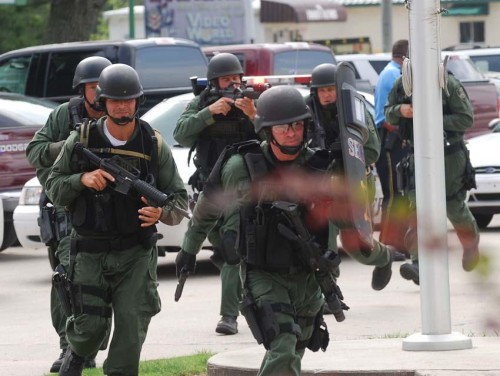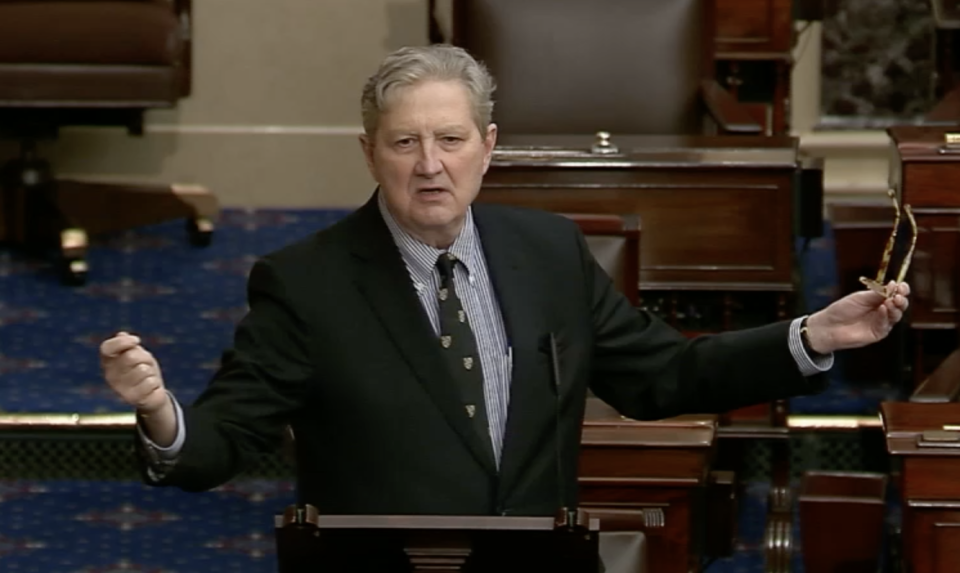Freda Wood Toups
August 4, 2009
Clara Arabie Hoskins
August 6, 2009Four gunmen, dressed in camouflage and armed with a small arsenal, stormed into Central Lafourche High School last Wednesday and opened fire on students and faculty.
Fortunately, the fatalities – 14 students and one faculty member – were fictitious. So were the 22 injuries, which included students, faculty and two Lafourche Parish sheriff’s deputies.
The scenario played out at Central Lafourche was part of a campus training for local law enforcement agencies, Lafourche Parish school officials and local medical response teams.
Within hours, authorities had killed three of the four gunmen – identified later as Central Lafourche students – and regained control of the school.
According to Lafourche Sheriff Craig Webre, the lone surviving gunman would tell deputies that revenge for years of being bullied at school was the motive for the attack.
“Bullying is a common problem in all school systems,” Webre said following last week’s drill. “As law enforcement officers and school educators, we have to be able to put an end to it before it reaches this point.”
The training comes in the aftermath of the Larose-Cut Off Middle School shooting just two months ago when Justin Doucet, an eighth grader, entered a classroom filled with his peers, fired a shot at the ceiling above the teacher’s head, bolted from the classroom and, ultimately, took his own life in the boy’s bathroom adjacent to the classroom.
Lafourche Parish School Board safety department manager Seth Holloway said the drill was not in response to the Larose-Cut Off shooting, however.
This particular training was planned weeks before the actual campus shooting occurred May 18. Holloway coordinated with sheriff’s office SWAT director Jeremy Granier to conduct a live drill for emergency responders and school officials.
Nearly 200 people participated in last Wednesday’s event, including students inside the school and worried parents who waited outside.
When the first shots were fired at the main entrance of the school, faculty and students secured themselves in classrooms, kneeling under desks for cover.
Within minutes, Lafourche Parish Sheriff’s Office first responders were on the scene, followed by the sheriff’s office and Louisiana State Police SWAT teams.
SWAT secured the school, taking down each armed suspect. Deputies evacuated the school room by room, searching each faculty member and student before escorting them out of the school with their hands held above their heads – similar to the scene that unfolded moments after the 1999 shooting at Columbine High School outside Denver.
Acadian Ambulance Service assessed each student and faculty member and transported the injured to Ochsner St. Anne General Hospital for treatment. The non-injured people were taken to a safe location behind campus.
Kathy Hebert, emergency preparedness coordinator for Ochsner St. Anne, said the hospital treated 17 victims with minor to life-threatening injuries.
“This is a really good drill,” Hebert said. “The teamwork was fantastic. We found that we have a very small area of improvements to make. We implemented the hospital incident command system, and it worked.”
Ray Pierce, a 15-year veteran with the school system’s crisis management team, said every time a school incident occurs in other parts of the nation, Lafourche reevaluates its school emergency plan to adapt to the different scenarios that could happen.
This is the second time Lafourche has conducted full-scale active shooter response training that included all first-responding entities. The first was at South Lafourche High School in 2002.
South Lafourche High School Assistant Principal Greg Terrebonne said, “You have these drills to prepare just in case something happens. You hope that it never does, but you have to lay the groundwork. I am a firm believer that practice makes perfect.”
He said the drill helps to coordinate efforts between the school board, the sheriff’s office, ambulance services, fire departments and hospitals.
“That way, should something happen, you know the people who are coming onto your campus,” Terrebonne said, “and you know that they have been trained to end the threat as quickly as possible.”
Law enforcement and school officers captured footage of the drill from every angle to later dissect and identify any flaws. After reviewing the tape, Webre gave all involved a passing grade of “A.”
The training lasted for two hours. However, the sheriff noted that real-life situations do not have a time frame.
He advised Granier to push the scenario to its limit. “It really drove the realism,” he said.
“The more opportunities to identify any flaws in the plan, the better prepared you will be next time,” he said. “If we do a simple, single shooter who gives up when police arrive, we don’t have the full effect of testing all our responding systems.”
After the training, the sheriff identified one logistical challenge. The blaring siren from the school’s audible alarm system made it difficult for responding deputies and SWAT to hear what was going on around them.
“Once the alarm is activated and the school is in lockdown and contained, the audible signal served no more value,” Webre said. “It only impairs their ability to be able to communicate or hear if there were any additional shooters.”
The sheriff suggested that deputies first entering the building should disarm the system.
From a civilian viewpoint, the aftereffect of last week’s drill was disbelief. School safety manager Holloway said the training seemed surreal.
“Hearing the gunshots inside the school gives you chills,” he said. “It feels like it’s actually happening and the kids were so dramatic in their cries. I feel that the sheriff’s office did a great job in responding.”
Tisa Hill, a prevention specialist with the school system, said she got a great a view of the teens, their parents and the responding agencies. “We are going to get their input to see what we can do to make it better,” she said.
Seventeen-year-old senior Bethany Folse, who was the first student to fall victim to the shooters, described the day’s events as life changing. “When the shots went off, you realize what type of situation it is,” she said, “and when the officers pulled me out of the building, I was like ‘Oh my God, this could actually happen.’ At least next time, I will know what to do.”
“Every school should really do this because we don’t realize how serious the situation is until you are in it,” she added.
Louisiana State Police SWAT rushes to Central Lafourche High School in response to reports that gunmen had taken over the school. More than 200 people – law enforcement officers, medical and fire responders and school officials – participated in the campus training. * Photo by KEYON K. JEFF












